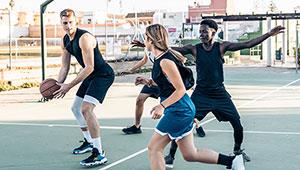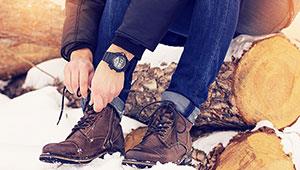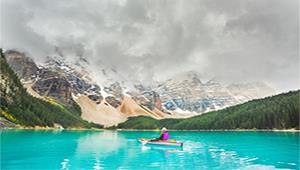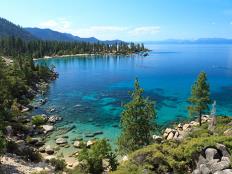Tornadoes: Twisters aren't limited to Kansas, Oklahoma and Texas; they've been reported in every state in the United States and can occur at any time, day or night. And just because they're rare in mountainous regions doesn't mean they can't happen.
If you happen upon a tornado while traveling to or from a campground, it may be possible to drive away from it if road conditions permit and you can reach 60+ miles per hour--while tornado winds can reach 200 mph or more, a twister rarely moves faster than 60 mph. If you can drive at a right angle to the direction the tornado is traveling, you're likely to avoid the danger by getting out of its way. Just be aware that it can change direction quickly.
If you can't get away, abandon your vehicle and seek the best shelter you can find. Most injuries and deaths are due to flying debris. So your best bet is to get low and out of the winds and find something to hang onto. You may think your 3-ton SUV is good protection, but a tornado can pick it up or roll it easily until it's a mashed up mess.
Finally, don't seek shelter under an overpass as it acts like a wind tunnel and can actually increase the wind speed.
Hot Camping Weather
If you venture into hot zones, you should be prepared for the conditions. Living in an air-conditioned motorhome or trailer can make places with names like Furnace Gulch or Anvil Flats more bearable--as long as you have AC power. But you need to be prepared should that power fail. If you're in a tent, forget it. Thin nylon walls offer absolutely no comfort from blistering heat. Here's how to prepare in other ways.
Hot Weather Clothing: Your body cools off in warm climates through sweating. So be sure your wardrobe includes light colored fabrics that reflect the sun's rays away and that can vent off perspiration. Polyester and nylon work well and dry quickly. And a hat (not a visor) is an absolute must to keep your noggin from overheating.
Hot Weather Gear: Leave your winter-rated sleeping bag at home and equip yourself with lighter, cooler beddingfor a hot trip.
If you're tent camping, it will be hot and stuffy in the warm months. Remove the rain fly from the roof to help cool off, or sleep outdoors on a sleeping pad. Of course you might have to slather on the DEET spray to keep ravenous bugs at bay while you sleep.
Finally, use two ice coolers, one for drinks and one for food. The ice in the food chest will last longer than the drink chest, which will be opened more frequently by thirsty campers.
Stay Hydrated: As long as you sweat you're losing water, and as you learned in biology, the human body needs plenty of H2O to function properly. So make sure you have lots of fluids on hand. And, no, beer, wine and other alcoholic beverages don't count when it comes to hydration.
Find Shade: If you can, park your RV or pitch your tent in a shady area to keep out of the sun. If you can't find shade, create your own by tying a tarp between some trees. Also, be sure to apply plenty of waterproof sunscreen and lip balm that's at least SPF 30.
Cold Camping Weather
In colder regions, or where sudden weather changes can cause temperatures to plunge, you have to prepare for big fluctuations. Many mountain campgrounds can still have snow on the ground in June.
Cold Weather Clothing: If you're not heading north of the Arctic Circle, you really just need the basics, which includes long sleeve shirts, long pants, a hooded sweatshirt, parka jacket, warm socks, gloves or mittens, and a beanie.
Avoid cotton materials as they trap and hold moisture close to the body, reducing any insulating value. Undergarments of polypropylene are ideal for wicking away dampness, while over garments should be made of wool. If you layer, it's easier to adjust your comfort level as temperatures change.
Cold Weather Gear: Instead of sweltering inside a super warm sleeping bag, add an extra blanket on top of your standard duty bag instead.
Be sure to shelter your food and water from cold temperatures, as well. Sleep with your water bottle inside your sleeping bag to avoid the disappointment of frozen water when all you want is a cup of hot coffee in the morning.
Bottom Line
Your best bet is to plan ahead for all kinds of camping weather. Find out what the conditions are where you're headed, and get updates frequently.
 Book your next camping trip
Book your next camping trip
- 2
- of
- 2








Discuss This Article